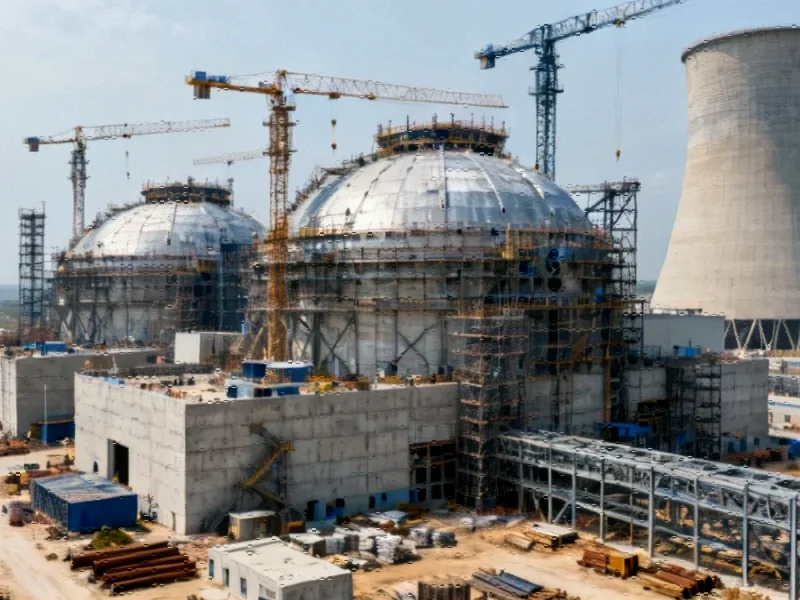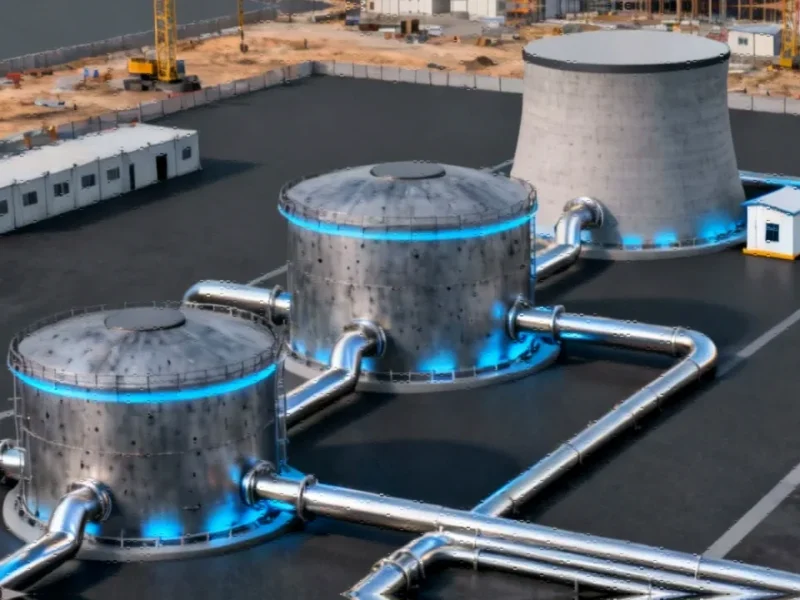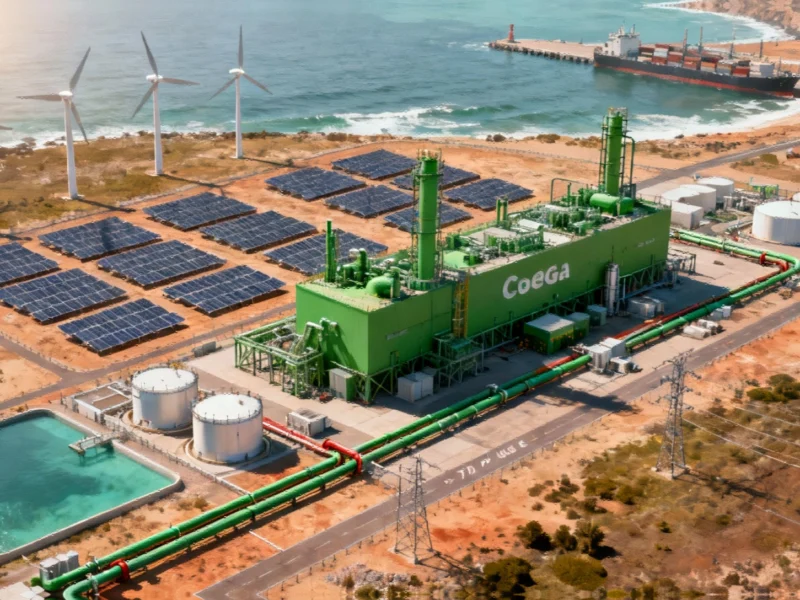Tech Giant Advances Carbon-Free Energy Strategy for Data Centers
Amazon has unveiled comprehensive details about its pioneering small modular reactor (SMR) facility in Richland, Washington, marking a significant milestone in the tech industry’s pursuit of reliable, carbon-free energy for power-intensive artificial intelligence operations. The Cascade Advanced Energy Facility represents a strategic partnership between Amazon, SMR developer X-energy, and utility provider Energy Northwest, signaling a major shift in how technology companies approach their growing energy demands.
This ambitious nuclear initiative comes at a time when major technology companies are reevaluating their strategic directions, as evidenced by recent industry developments that show even established players are adapting to changing market conditions.
Technical Specifications and Deployment Timeline
The Cascade facility will be constructed adjacent to Energy Northwest’s existing Columbia Generating Station, leveraging the region’s established nuclear infrastructure. The project will deploy X-energy’s innovative Xe-100 reactors, which utilize pebble-bed, high-temperature gas-cooled technology. Each reactor module generates 80MWe (electric) and 200MWt (thermal), with the initial phase comprising four units totaling 320MW.
“This project represents a fundamental reimagining of how we approach energy infrastructure for digital technologies,” said J. Clay Sell, CEO of X-energy. “The partnership with Amazon enables us to scale advanced nuclear technology in ways previously not possible.”
The complete buildout envisions three 320MW sections, ultimately reaching 960MW of capacity. Construction is scheduled to begin by the end of this decade, with operational commencement anticipated in the 2030s. This timeline aligns with Amazon’s projected energy needs for its expanding AI and cloud computing services.
Workforce Development and Educational Infrastructure
A critical component of the project involves developing specialized nuclear talent through the Energy Learning Center at Columbia Basin College. The center features an education simulator that replicates X-energy’s Xe-100 control room, providing hands-on training for future nuclear operators and technicians.
“This interactive training approach demystifies nuclear technology and creates tangible career pathways,” noted Bob Schuetz, CEO of Energy Northwest. “We’re building not just a power facility, but a sustainable workforce that will support advanced energy projects for decades.”
The project is expected to generate over 1,000 construction jobs and more than 100 permanent positions in nuclear operations, engineering, and specialized technical fields. This workforce development initiative represents a significant investment in the local economy and aligns with broader technology sector trends toward specialized talent cultivation.
Strategic Partnerships and Global Supply Chain
Amazon’s commitment extends beyond the Cascade facility, including a direct investment in X-energy’s Series C-1 financing round that raised $500 million. This funding supports manufacturing capacity for SMR equipment capable of powering over 5GW of new nuclear projects using X-energy’s technology by 2039.
The international dimension of this initiative was strengthened earlier this year through agreements with South Korea’s Doosan Enerbility and Korea Hydro & Nuclear Power Co. The collaboration aims to mobilize up to $50 billion in public and private investments for Xe-100 projects and expand SMR supply chain capacity.
These strategic moves reflect how major technology initiatives increasingly require global partnerships and substantial capital investment to achieve scale.
Industry Context and Competitive Landscape
Amazon joins a growing list of technology companies investing in SMR technology to power their energy-intensive operations. The move toward advanced nuclear solutions reflects the industry’s recognition that traditional renewable sources alone cannot meet the massive power requirements of AI data centers and cloud computing infrastructure.
The nuclear approach represents an alternative strategy to other emerging technology platforms that are also competing in the AI infrastructure space. As companies vie for competitive advantage in artificial intelligence, energy strategy has become a critical differentiator.
This trend is further evidenced by recent technology announcements from other industry leaders, highlighting how energy innovation and computational advancement are becoming increasingly intertwined.
Environmental Impact and Sustainability Goals
Kara Hurst, Amazon’s chief sustainability officer, emphasized the project’s dual benefits: “This isn’t just about new technology; it’s about creating a reliable source of carbon-free energy that will support our growing digital world while advancing our Climate Pledge commitment to reach net-zero carbon by 2040.”
The Xe-100 reactor design offers enhanced safety features compared to traditional nuclear plants, including passive cooling systems and robust containment capabilities. The pebble-bed technology uses uranium fuel particles encapsulated in graphite spheres about the size of billiard balls, providing multiple layers of containment and enabling continuous refueling without shutdowns.
This approach to sustainable energy infrastructure represents the kind of innovative thinking that’s transforming multiple sectors, from healthcare to industrial computing.
As detailed in this comprehensive analysis of Amazon’s nuclear initiative, the Cascade Advanced Energy Facility represents a watershed moment for both the technology and energy sectors, potentially establishing a new template for powering the digital economy while advancing climate goals.
This article aggregates information from publicly available sources. All trademarks and copyrights belong to their respective owners.
Note: Featured image is for illustrative purposes only and does not represent any specific product, service, or entity mentioned in this article.



